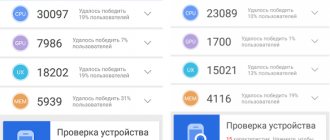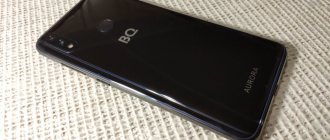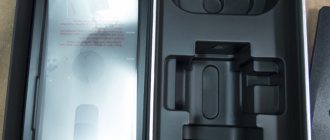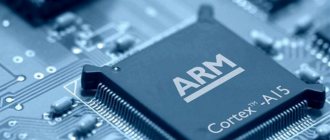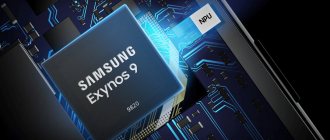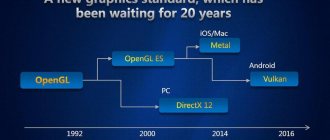MediaTek Helio P10 or Snapdragon 625: Which one will you choose?
Helio P10Snapdragon 625
SoCs such as MediaTek Helio P10 and Snapdragon 625 can be found mainly in budget and mid-range devices. Therefore, we cannot count on some incredible performance. Nevertheless, the power of these chipsets should be enough for basic system performance, watching videos and not too demanding games. In today's review of the two above-mentioned mobile chipsets, we will find out which one is the most productive, energy efficient and profitable to purchase.
Mobile platform Snapdragon 625
It is not difficult to give examples of smartphone models using these processors: on Helio P10 (aka MT6755) – Xperia XA and Meizu m5 Note. Well-known models with Snapdragon 625 are Huawei Nova, Moto Z Play.
MediaTek Helio P10 or Snapdragon 625? Who has better characteristics?
Xiaomi Mi Max 3 goes on sale in Deep Sea Blue color
Let's start with the basic technical characteristics. One of the main technical differences between MediaTek Helio P10 and Snapdragon 625 is the process technology. The technical process is the resolution characteristic of the device on which this processor is implemented. We won’t go into details, but the smaller the process, the more economical and powerful the chipset is. The value of this characteristic of the SD625 is half that of its opponent (28 nm versus 14 nm), therefore, there is a clear advantage in favor of Qualcomm.
| Qualcomm Snapdragon 625 | MediaTek Helio P10 | |
| Technical process | 14 nm | 28 nm |
| Number of Cores | 8 | 8 |
| Processor architecture | 8x Cortex A53 | 8x Cortex A53 |
| Clock frequency | 8x 2.0 GHz | 4x 2.0 GHz and 4x 1.1 GHz |
| Graphics accelerator | Adreno 506 GPU | Mali-T860 MP2 700 MHz |
| RAM | LPDDR3 933 MHz | LPDDR3 933 MHz |
The Helio P10's graphics are handled by the budget dual-core Mali-T860MP2, which is clearly not going to appeal to those who like to play modern games. And the SD625 has an Adreno 506 graphics adapter, which is an order of magnitude higher than its competitor and is even capable of processing demanding games at minimum and medium graphics settings.
Mobile platform Snapdragon 625
The type and number of cores in both processors are the same - Cortex-A53, however, if the chipset from Qualcomm has all 8 cores operating at the same clock frequency of 2.0 GHz, then the P10 has only 4 cores with this frequency, while the rest of MediaTek's cores have a frequency much higher the smaller one is only 1.1 GHz. These cores are energy efficient and run under light load.
Summing up the comparison of technical characteristics, Snapdragon 625 is the undisputed leader so far.
Mediatek Mobile Processor Guide
Reward accrued
This material was written by a site visitor and was compensated for.
The Taiwanese company MediaTek traditionally plays a second role in the competition with mobile processors from Qualcomm Corporation, however, recently not only little-known manufacturers, but also market leaders are installing chips from MediaTek in their gadgets. This is largely due to the improved performance of new products from MediaTek in addition to the traditionally lower cost of its processors.
This article will describe all modern mobile processors from MediaTek that are already used or planned for installation in smartphones from various manufacturers.
announcements and advertising
2080 Super Gigabyte Gaming OC for 60 rubles.
Compeo.ru - the right comp store without any tricks
RTX 2060 becomes cheaper before the arrival of 3xxx
Ryzen 4000
series included in computers already in Citylink
The price of MSI RTX 2070 has collapsed after the announcement of RTX 3xxx
Core i9 10 series is half the price of the same 9 series
The price of memory has been halved in Regard - it’s more expensive everywhere
Premium MediaTek 5G chipsets
In 2020, MediaTek announced its 5G-ready chip called Dimensity 1000. This is MediaTek's first flagship chipset since 2017's failed Helio X series.
The chipset differs from most other 5G-ready processors in that it offers a built-in 5G modem supporting 6GHz and 5G + 5G dual-SIM networks, however, it does not offer mmWave support, meaning it will not be suitable for some mobile operators in the USA and Japan.
The Dimensity 1000 processor is an octa-core chip with four Cortex-A77 cores and four Cortex-A55 cores. The processor performance should be on par with the Snapdragon 865 and theoretically better than the Kirin 990.
The MediaTek GPU is more modest, featuring the same Mali-G77 graphics as the Samsung Exynos 990 introduced in the Galaxy S20 series, but with fewer graphics cores, meaning it should theoretically be less powerful than the GPU in flagship from Samsung.
The new MediaTek processor features a six-core APU for better machine learning management,
The photography capabilities of the Dimensity 1000 aren't as impressive as the Snapdragon 865, but you still get support for 80-megapixel cameras (with multi-frame processing), five rear cameras, and 4K video at 60fps.
In addition, the Dimensity 1000 chip offers support for Bluetooth 5.1, Wi-Fi 6, 90Hz refresh rate in QHD+, 120Hz in FHD+, and support for the Google AV1 codec.
But the Dimensity 1000 is not the only 5G-ready MediaTek chipset as the company has also launched the Dimensity 800 chip, which includes four Cortex-A76 cores and four Cortex-A55 cores. This chipset will compete with Qualcomm's Snapdragon 765 SoC. The Dimensity 800 includes a Mali-G77 MP4 GPU, a Helio M70 5G modem, 90Hz support, a quad-core APU for machine learning, and support for cameras up to 64MP with a single camera.
MediaTek Helio G Series
The MediaTek Helio G series is the latest family of chips in the brand's arsenal, focusing on gaming and pure performance in general. All these chips use proprietary HyperEngine technology for smoother gaming.
Helio G90 and G90T were the first chips in the series and received an eight-core processor (two Cortex-A76 cores plus six Cortex-A55 cores) and quad-core Mali-G76 graphics, which should have excellent gaming performance.
In addition, the Helio G90 series supports WiFi connections with frequencies of 2.4 GHz and 5 GHz, up to 10 GB of RAM, cameras with a resolution of up to 64 megapixels, and also has an APU for machine learning.
At the beginning of the year, MediaTek introduced the Helio G70 and G80 chips. While they are not as powerful as the G90 series, they still deliver class-leading performance. The processors received eight cores (two Cortex-A75 cores and six Cortex-A55 cores), Mali-G52 MC2 graphics and support for 48-megapixel cameras. So those who are looking for a productive smartphone for around $100 should definitely consider purchasing devices with a G70 or G80 processor.
Helio P series
The MediaTek Helio P series of processors has been around for quite some time. And the most powerful processors in the series are Helio P90 and P95.
Helio P95 is essentially a slight update to the P90. Both processors have the same eight-core architecture (two Cortex-A75 cores and six Cortex-A55 cores), the same PowerVR GM 9446 GPU, and the same camera capabilities. In the latter case, this means support for a 64-megapixel sensor and 4K recording. In fact, the only major difference between the two chipsets is that the P95 now comes with support for HyperEngine technology, which improves gaming performance. Both processors are equipped with a machine learning APU and a dedicated AI accelerator.
The Helio P65 processor is something between the P9X series and the Helio G70/G80. This means a relatively powerful eight-core processor (two Cortex-A75 cores and six Cortex-A55 cores), budget Mali-G52 MC2 graphics, Bluetooth 5 support and a 48-megapixel camera. However, the biggest drawback is that the processor lacks AI support. Thus, machine learning tasks (e.g. image recognition, computer vision, face recognition/unlocking) will be much slower than on the previously mentioned SoCs.
The MediaTek P60 and P70 processors are slightly less powerful than the previous Helio P65 in many ways. These chips offer older CPU cores, a Mali-G72 MP3 GPU, and Bluetooth 4.2. Moreover, Helio P60 and P70 only have support for 48 megapixel cameras. However, the P60 and P70 have one advantage and that is the dedicated AI chip. Therefore, tasks such as face unlocking, AI-powered photography, and other machine learning-related activities will be more effective here. As for the specific differences between the P60 and P70, the P70 simply has slightly higher CPU and GPU clock speeds, as well as a slightly more efficient AI processor.
Junior MediaTek processors
The Taiwanese manufacturer has a reputation as a supplier of budget chips for entry-level phones. Over the years, MediaTek has gradually shifted its focus towards the mid-range segment, but still has a strong presence at the entry level.
MediaTek's most powerful budget chips are Helio P35, Helio P22 and Helio A25. All three processors are equipped with eight Cortex-A53 cores, PowerVR GE8320 graphics and are based on an efficient 12 nm process technology. The camera capabilities are also quite modest and none of the chipsets support cameras with a resolution of more than 25 megapixels.
Helio A22 and A20 are currently the weakest mobile processors from MediaTek. Both chips have only four low-power Cortex-A53 processor cores. This means that even with simple navigation through the system menu, freezes and slowdowns will be noticeable, and you can simply forget about any comfortable playing modern mobile games on the PowerVR GE 8300 graphics chip. The buyer of devices with Helio A22 and A20 chipsets can count on a screen with HD+ resolution and modest photographic camera capabilities.
Real tests
In real tests conducted in GeekBench and AnTuTu, everything is very clear. The performance gain of the Snapdragon 625 compared to the Helio P10 is not that huge, but quite noticeable. Expressed as a percentage, it is more than 20%.
AnTuTu Benchmark is a comparison tool for Android mobile devices that allows you to check the performance of your device. It is also very useful if you are thinking about downloading games with high performance graphics
Geekbench 3 is an Android version of the program that contains a comprehensive set of tests that can quickly and accurately evaluate the efficiency of the processor. Testing provides reliable and correct results and also allows you to compare the performance of your device with others.
MediaTek Helio X10 and Helio X20 processors: characteristics
We won’t dwell on theory for long.
The main characteristics of Helio X10 and Helio X20 are collected in one table, and immediately below it the most interesting part begins - a comparison of real smartphones. MediaTek Helio X10 vs. Helio X20: characteristics
| MediaTek Helio X10 | MediaTek Helio X20 | |
| Number | MT6795 | MT6797 |
| Technical process | 28 nm | 20 nm |
| Number of Cores | 8 | 10 |
| Processor architecture | 8x Cortex A53 | 2x Cortex A72 + 4x Cortex A53 +4x Cortex A53 |
| Clock frequency | 8x up to 2.2 GHz | 2x 2.3 GHz + 4x 1.85 GHz + 4x 1.4 GHz |
| Graphics accelerator | PowerVR G6200 700MHz | Mali-T880 MP4 780MHz |
| RAM | 2x LPDDR3 933 MHz | 2x LPDDR3 933 MHz |
| LTE Modem | Cat.4 150/50 Mbit/s | Cat.6 300/50 Mbit/s |
| Display | up to 2560 x 1600 | up to 2560 x 1600 |
| Video recording | 4K @ 30fps, 2K @ 30fps | 4K @ 30fps, 2K @ 30fps |
| Camera | up to 20 MP | up to 32 MP |
Helio X10 and Helio X20: technical process and battery consumption
The Helio X10 processor (MT6795) is manufactured using the 28 nm process technology, and its senior teammate is manufactured using the 20 nm process technology. In practice, this means that phones running the X20 (MT6797) should heat up less and be more battery efficient.
It is not difficult to check theoretical calculations.
The autonomy rating of the smartphones participating in the comparison is known, as is the operating time on a single charge under different modes of use (watching videos, surfing the Internet, making calls). All that remains is to compare the numbers. MediaTek Helio X10 vs. Helio X20: battery consumption
| Redmi Note 3 (X10) | Redmi Note 4 (X20) | |
| Battery | 4050 mAh | 4100 mAh |
| Autonomy rating | 72 hours | 83 hours |
| 3G calls | 22:02 | 21:17 |
| Internet | 10:13 | 13:39 |
| Video | 09:57 | 09:47 |
When comparing the autonomy of Xiaomi phones, we see an interesting picture. Redmi Note 4 on X20 has longer battery life under standard use. The battery life rating is 11 hours higher, which means that if you watch videos, surf the web, and talk on the phone for 1 hour every day, the Redmi Note 4 battery will last longer than its predecessor. The battery capacity, diagonal and screen resolution of the smartphones are identical, so they are ideal for comparing chipsets.
When working on the network, there is an advantage for the 2020 model, but in the next test this advantage disappears: in video viewing mode, Redmi Note 4 holds the battery exactly the same (the difference of 10 minutes can be neglected) as its predecessor.
Helio X10 and Helio X20 processors
| Meizu MX5 | Meizu MX6 | |
| Battery | 3150 mAh | 3060 mAh |
| Autonomy rating | 55 hours | 68 hours |
| 3G calls | 13:15 | 17:19 |
| Internet | 09:03 | 09:27 |
| Video | 09:13 | 09:07 |
To get the full picture, let’s compare the operating time on one charge of two Meizu phones. If you don't get too picky about the numbers, you can come to similar conclusions. The autonomy rating of the MX6 on the X20 is 13 hours higher, but when working on the network and watching videos, we do not get any tangible benefit: smartphones last about 10 hours, after which we urgently need to look for a charger and socket.
Verdict. The transition to a new technological process did not provide a noticeable increase in the autonomy of smartphones. Why is that? We'll talk about this in the end. When it comes to overheating, all smartphones get very hot and Helio X20 doesn't have an advantage either.
Helio X10 and Helio X20 processors: number of cores and speed
The number of cores affects the speed of the central processing unit (CPU) in multitasking mode. On paper, the 10-core Helio X20 has an obvious advantage here; it remains to be confirmed by test results. The processing power of the central processor is assessed in the GeekBench benchmark.
In GeekBench 3, the advantage of Redmi Note 4 is more than obvious, but when comparing Meizu smartphones, the picture turns out to be blurry. Yes, the X20 is faster, but the difference is not that great. Moreover, we see that Meizu MX5 on Helio X10 (MT6795) almost reached Redmi Note 4 on Helio X20 (MT6797). Firmware affects CPU speed, and software optimization can even out the difference in the number of cores.
GeekBench 3 (multi-core)
MediaTek Helio X10 and X20: graphics adapter and framerate in games
Helio X10 has PowerVR G6200 , and Helio X20 MT6797 received a much more powerful Mali-T880 . The advantage in speed of working with video and 3D graphics is on the side of smartphones running Helio X20, and the test results once again confirm this. We check the power of the graphics accelerator in the GFX and BaseMark X benchmarks. The results are shown in diagrams; no comments are necessary.
GFX 3.1 Manhattan (onscreen)
BaseMark X
MediaTek Helio X10 and X20: overall speed of smartphones
Games and CPU processing power are certainly important, but I would like to understand how fast, responsive and trouble-free a smartphone will be on a particular processor. You can check this in complex tests, which are everyone’s favorite AnTuTu and BaseMark OS 2.0 (or the old version of BaseMark OS II).
When comparing Xiaomi smartphones, we see the complete dominance of Redmi Note 4 on MediaTek Helio X20. With such a difference, there is no doubt that the phone will perform faster, even if you are skeptical about synthetic “parrots”.
Helio X10 and Helio X20 in AnTuTu 6
BaseMark OS 2.0
The balance of power does not change when comparing the two generations of Meizu MX, but there is no obvious dominance here. Yes, the advantage of Helio X20 in Antutu is great, but it is not double, as is the case with Xiaomi phones. In BaseMark OS, the phones score close, which correlates with the results obtained in GeekBench.
AnTuTu 5
BaseMark OS II
Gaming performance
The following tests are about the capabilities of the chipsets in games. In this case, everything is very simple. Adreno 506, as expected, is almost twice as good as its competitor Mali-T860MP2. Consequently, it is devices that have a Qualcomm Snapdragon 625 on board that can lay claim to the role of budget gaming devices. With fairly high performance, they are characterized by low heat generation and minimal throttling.
Autonomy
Qualcomm processor catalog
It's time to find out how long your devices will last on a single charge. Experts, in turn, unanimously speak out in favor of Snapdragon 625.
Expert opinion
Grigoriev Stanislav Alexandrovich
Chip Expert
It is worth noting that the 5.5-inch Moto Z Play with Snapdragon 625 and a 3510 mAh battery outperforms the similar Meizu M3 Note with Helio P10 and a 4100 mAh battery (93 hours vs. 100 hours).
The winner is the chipset from Qualcomm, subject to active use of the device, which gives more hours of operation without recharging.
